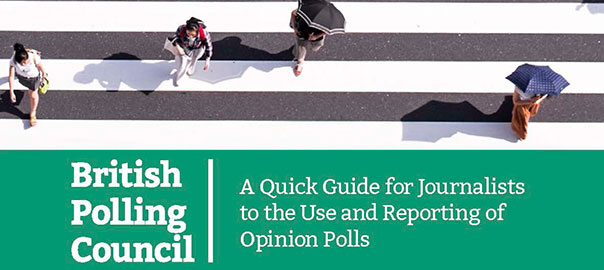The British Polling Council is today publishing A Quick Guide for Journalists to the Use and Reporting of Opinion Polls.
This publication has been designed to provide practical guidance for anyone unfamiliar with polls who finds themselves charged with interpreting and writing up an opinion poll in today’s media environment.
It forms part of the British Polling Council’s response to the recommendations of the House of Lords Select Committee on Political Polling and Digital Media.
The document has been developed as a “guided tour” of the key points to bear in mind when working with opinion poll data. Its contents include:
- An overview on how polls are conducted, including what to look out for when judging whether the sample is representative.
- Advice on how to evaluate the questions covered in an opinion poll. For example: are they written in everyday language? Do the questions lead the respondent?
- Guidance on how to interpret the results of polls, including key dos and don’ts when it comes to looking at sub-samples (such as differences by age) or describing changes over time.
The resource has been developed to complement the existing materials available to practitioners and users of opinion polls, including this detailed guide developed by the press regulator IMPRESS and the Market Research Society.
The Quick Guide for Journalists is available on the BPC website (Opinion Polls: Guidance for Journalists), alongside a video briefing with the President of the British Polling Council, Professor Sir John Curtice.
Commenting on the launch of the Guide, Professor Curtice says: “In its report, the House of Lords committee expressed a number of concerns about how the media report polls. Our guide is intended to help address some of these concerns by providing a quick five-minute accessible introduction to polls. It describes both the strengths and the limits of polls, outlines five key questions that should be asked of any poll, and identifies the major potential pitfalls to avoid in writing a poll story. We hope that it will help journalists in newsdesks up and down the country report polls in a way that their audience finds both interesting and informative.”
